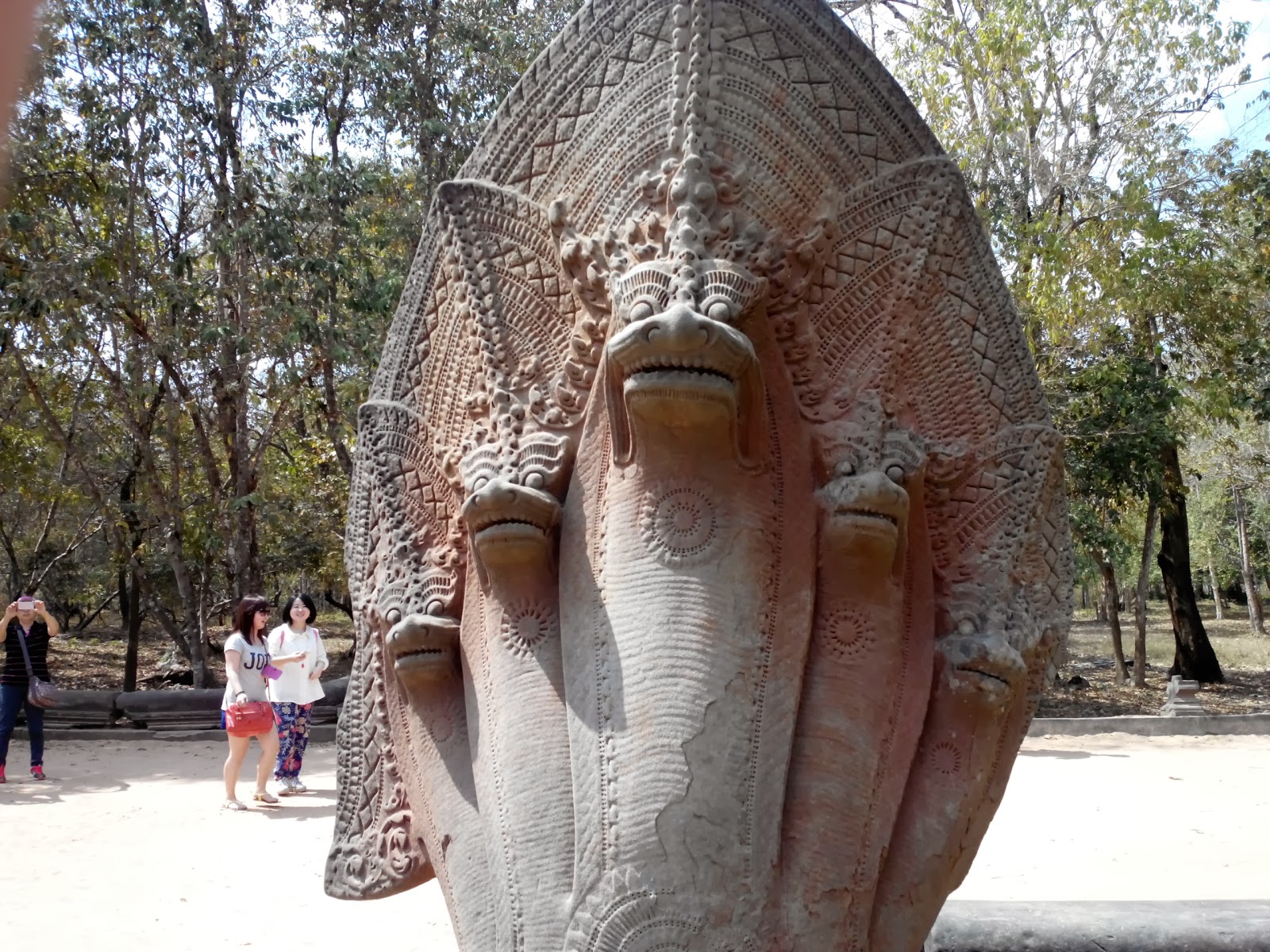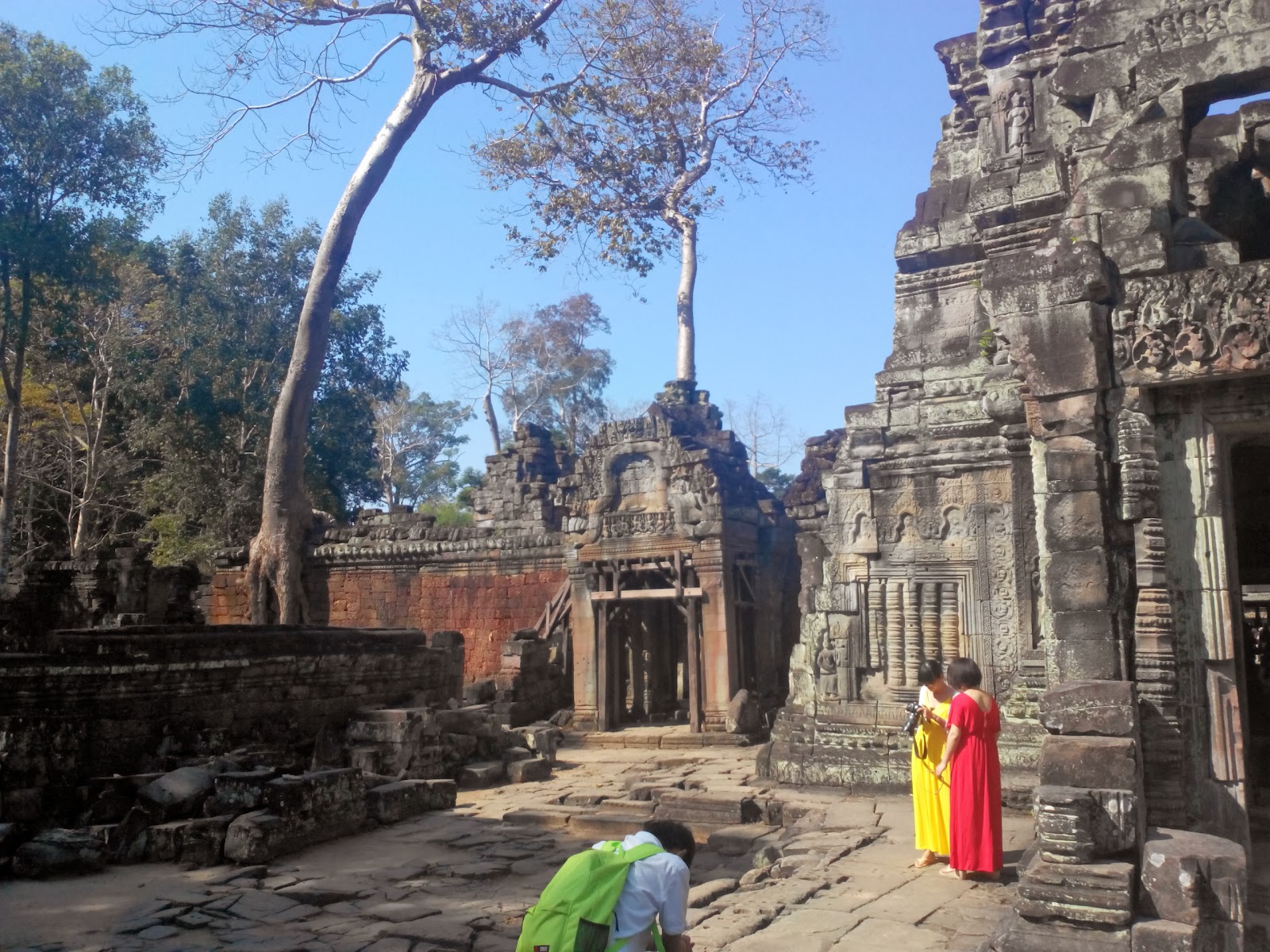This was our final day touring temples. The pictures are in reverse order so this blog entry begins where we finished at Beng Mealea. Beng Mealea is what the Cambodian people named this temple after they "discovered" it again. The original name has been forgotten. Beng Mealea means the flower of the mahogany tree. There were a lot of mahogany trees in the area and it seemed to fit. Evidiently, this temple was one of the hiding places for Pol Pot in the 1990's. It has been opened up for tourists for the past ten years but there isn't any restoration projects happening at this time.
As you can see from the pictures, there are a lot of rocks strewn about. This isn't because someone came and tried to rebuild it. It is the work of an invasive species of tree called the 'Strangler Fig'. Evenn though this temple had been clear cut 10 years ago, the strangler fig is taking over and breaking apart the sandstone rocks. The rocks then fall to the ground in ruins. I think it looks very picturesque.





This was a bee Jeff found in the bathroom. It was huge. There have been several big bee hives on the temples.
Our tour started with a trip to Tonle Sap lake to see the floating fishing village. This is a picture of the houses. They are built on stilts to make accomodation for the changing water levels. It is currently, the dry season.


Little kids were everywhere in the village. They kept themselves entertained by captaining their own boats.
This was a floating school. It was donated by a Vietnamese company.
 This is a picture of the steering device that was used on the boat. It was a rope connected to the steering wheel and the rudder.
This is a picture of the steering device that was used on the boat. It was a rope connected to the steering wheel and the rudder. This was the "dock" that changes positions depending on the level of water in the river. Right now, it is the dry season, so the water was low. In the rainy season, the water level is much higher, it covers the slits of the houses. Everything is built to move with the ebb and flow of the water. These peoples lives revolve around the water. Our boat trip was $40 for both of us. Each set of tourists got their own boat. At first, I didn't understand why, there was room enough for the other tourists in our boat. Then, our guide told us that the boat captains may only take out one boat a day. This means that the men working here are getting paid a lot more than their counterparts in the fishing village.
I've been having an internal debate about responsible tourism on this trip. Where we being responsible tourists taking a huge boat up a river with three people on it to gawk at these peoples lives? No. Where we helping these people make a more profitable living? Yes. In the end, I guess it is about balance. At any rate, we have concluded the guided tour portion of this trip. The rest of the trip will be at our lesiure. I have several things I want to do and see still in Siem Reap. Stay tuned.


























































































